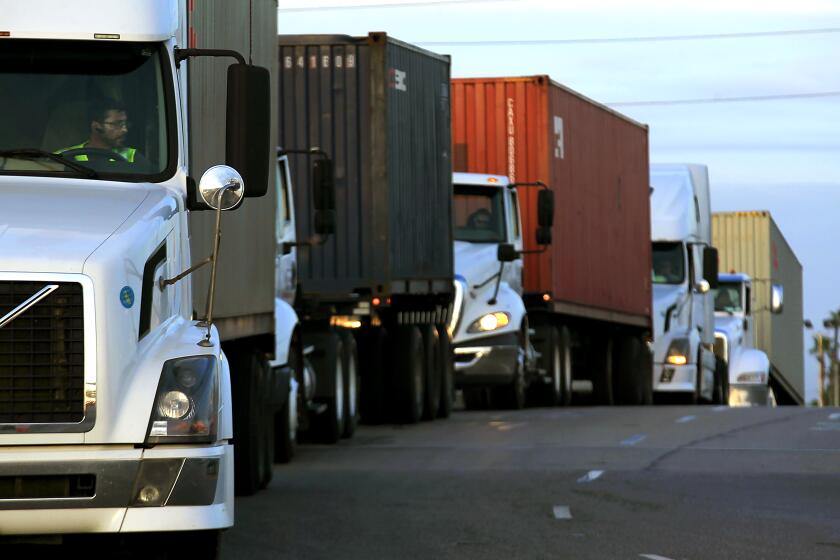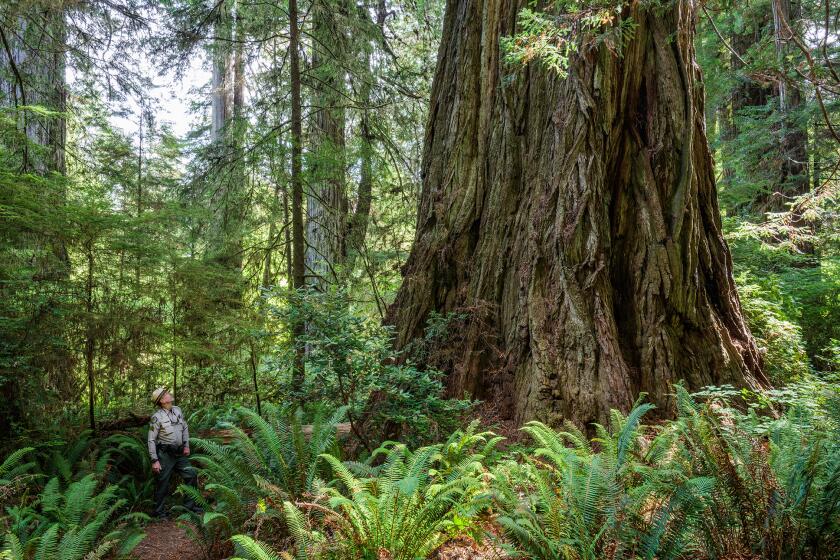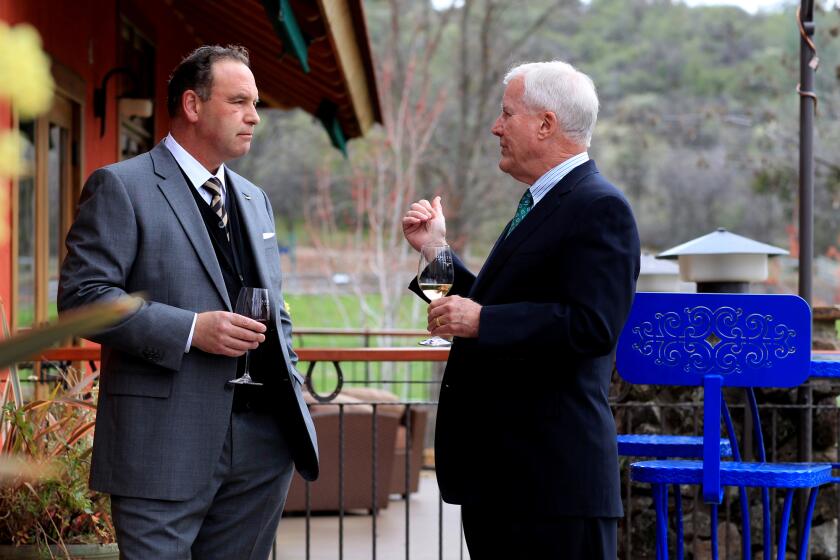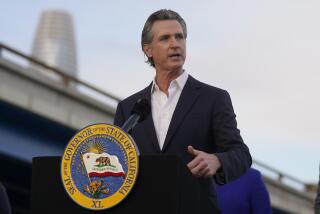These parts of California have the nation’s highest gas prices — and residents are reeling
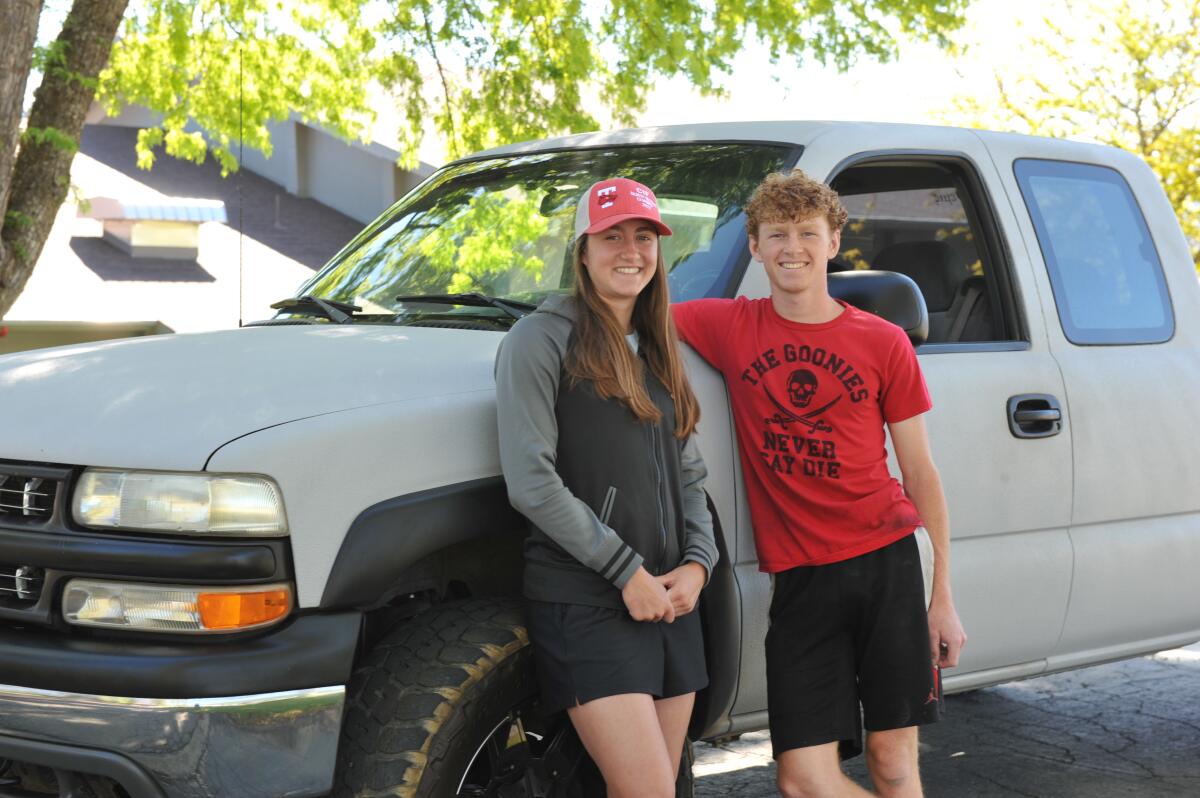
Lynda Pemberton was gassing up her Mazda pickup truck in the tiny Sierra Nevada town of Bridgeport, Calif., when the woman at the next pump started cussing.
It cost $125 to fill up her SUV. Suffice to say she wasn’t happy.
With resignation, Pemberton forked over a relatively merciful $87 to fill her slightly daintier truck. This week, she said, the town’s two gas stations were selling regular unleaded for $7.39 and $7.35 a gallon.
“People don’t like it, but there’s not much we can do about it,” said Pemberton, who owns the Jolly Kone restaurant in Bridgeport. “We’re a long way from another gas station.”
Americans everywhere are feeling pain at the pump, with the average price for a gallon of gas surpassing $4 in all 50 states this month for the first time ever, according to the American Automobile Assn.
But nowhere are prices more eye-popping than in rural California.
Record diesel prices are slamming consumers in hidden ways. That’s because diesel drives the economy, fueling trucking, agriculture and other major industries.
This week, the five counties in California with the priciest fuel were all in its rural north: Mono, Humboldt, Del Norte, Trinity and Napa.
Mono, a county of 14,000 people where Bridgeport is located, had the most expensive gas in the U.S., according to the AAA. A gallon of regular gas cost an average $7.04 on Wednesday — nearly a dollar more than California’s statewide average of $6.07.
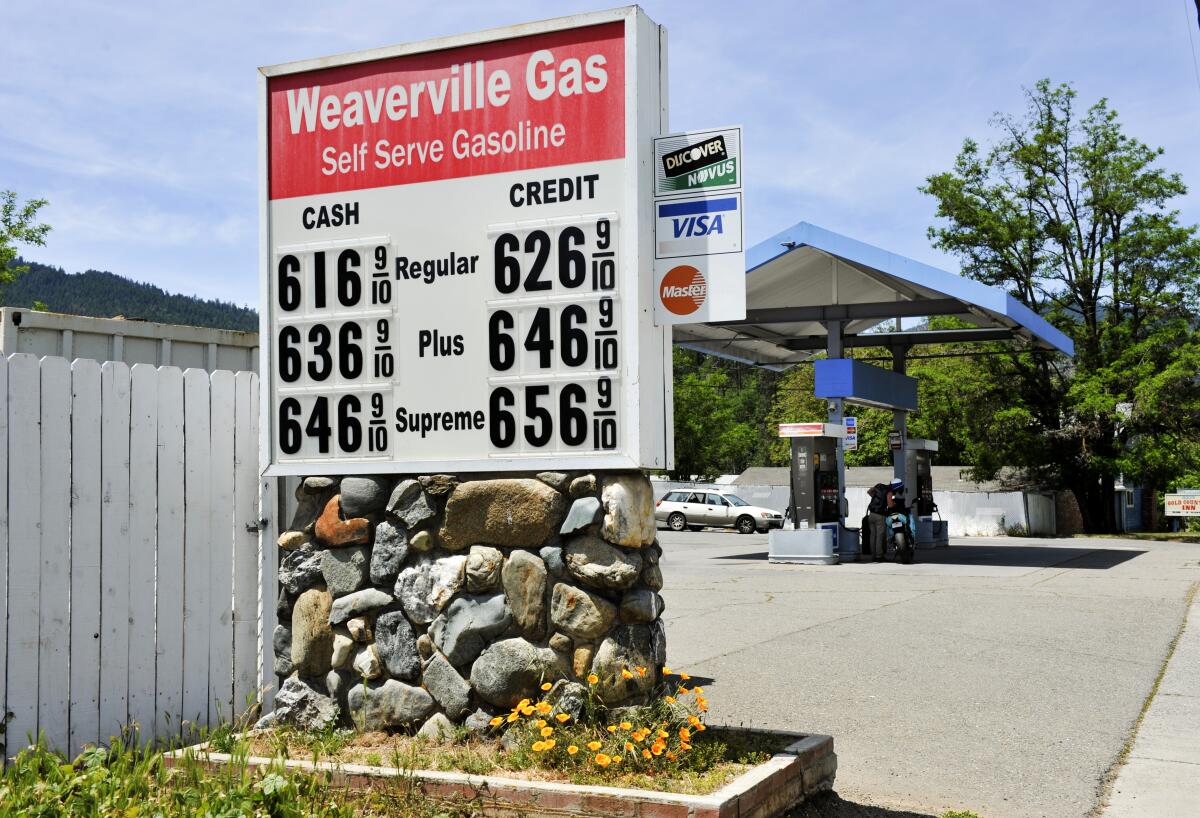
“We’re hoping to get some relief,” said Mono County Supervisor Bob Gardner, whose constituents regularly commute 60 to 120 miles roundtrip to work, in part because of a major housing shortage.
Gas prices, he said, “are on everybody’s minds. People think, ‘Geez, is this a permanent thing?’”
Even in a state as vast and seemingly engineered for driving as California, the rural north can feel overwhelmingly spread out, with destinations — schools, workplaces, postal offices, hospitals, supermarkets, home supply stores — often separated by distances that would span several of Los Angeles County’s 88 cities.
These vast expanses are unkind not only to gas tanks, but also to wallets, with prices for commodities like milk and eggs higher than in more heavily populated parts of California because of the cost of trucking them there.
To cope, rural Californians have taken to rationing trips and hauling gas cans to Oregon and Nevada, where prices are cheaper. Some have resorted to stealing gas from other people’s vehicles.
Pemberton said that she usually fills up in Bridgeport because she wants to support local businesses, but that other residents drive at least 45 miles to Douglas County, Nev., where gas this week was about $1.70 cheaper per gallon.
After the location of a grove of redwoods was made public, a flood of visitors caused significant damage. A new boardwalk aims to protect the trees.
California consistently has higher gas prices than the rest of the country because of a slew of factors, including higher gas taxes and environmental laws requiring a unique blend of cleaner fuel that costs more to produce.
Those are in addition to factors now driving prices up everywhere else, including supply chain problems, inflation and the war in Ukraine, which has seen the international market cut ties with Russia’s oil supply.
In rural areas, there are even more issues at play. It is more expensive for fuel distributors to deliver to remote locations. And there is less competition between gas stations, which set their own prices.
Rural Californians live in some of the state’s most economically distressed areas. They typically drive farther than their urban counterparts, and they have fewer choices for public transportation — if they have access to it at all.
“When people are paying $6, $7, $8 a gallon for gasoline and trying to get to work, you quickly get to a point of diminishing returns,” said Dee Davis, president and founder of the Kentucky-based Center for Rural Strategies.
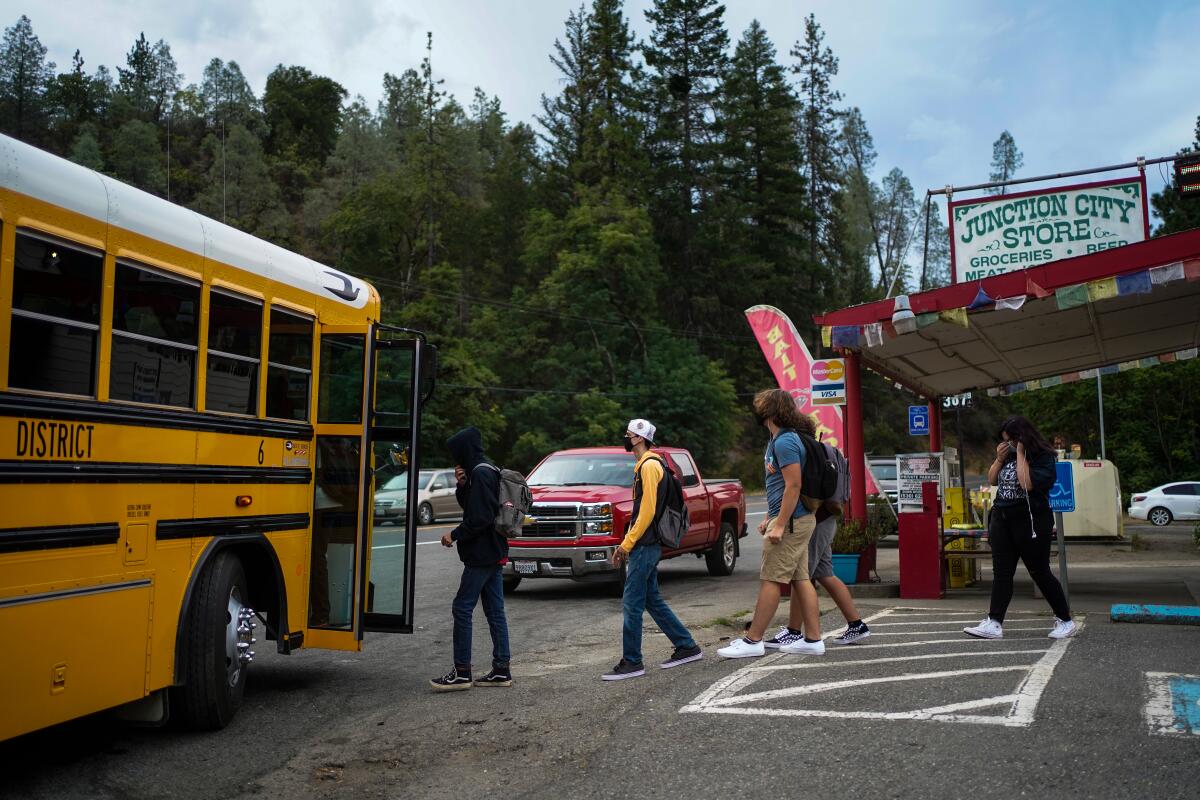
“The reality is rural economies have been struggling a long time,” forcing people to drive farther to find work, he said. “Traditional industries like farming, timbering and mining have been under intense pressure in a globalized economy ... and when we have these unplanned costs, it’s hard on everybody.”
Shelley Channel, who owns the Shell station in the Mono County hamlet of Lee Vining, said he has cringed over his own prices in recent weeks.
On Monday, his gas station was selling regular gasoline for $7.30 a gallon. Diesel was $7.55.
“I feel terrible,” Channel said. He has never charged this much in the more than 40 years he has owned the gas station.
Channel, 77, said his prices are based not just on how much the gas costs him to purchase — which is more than ever before — but also on Lee Vining’s location. The little tourist town is a gateway to Yosemite National Park; when the park’s eastern entrance shuts in the winter, business dries up.
Channel pays six full-time employees year-round. Their wages come almost entirely from what he makes during warmer months.
“I set my profit margin at the beginning of each year, projecting out what’s going to happen,” Channel said. “That doesn’t change. The only thing that changes is my cost. I had no idea it was going to be like this. It’s ridiculous.”
Every two weeks or so, Channel drives more than 100 miles north to Carson City, Nev., to buy groceries at Walmart or Costco. The trip in his Dodge diesel pickup now costs between $75 and $100.

Subscribers get exclusive access to this story
We’re offering L.A. Times subscribers special access to our best journalism. Thank you for your support.
Explore more Subscriber Exclusive content.
In Humboldt County — where regular gas cost an average of $6.49 on Thursday — people are growing increasingly desperate, said Barbara McCovey, who lives on the remote Yurok Reservation in the coastal woods, along the Klamath River.
McCovey, 58, is a driver for United Indian Health Services who takes patients in a government vehicle to far-flung medical appointments.
“I just see people feeling very discouraged right now,” she said. “It’s getting to the point where people say, ‘I can’t afford to go to work.’ Especially if you have a car that’s not good on fuel economy.”
Many tribal entities are reliant on annual federal grants, with strict budgets for how money can be spent. She worries the money will run out.
“You’re like, ‘Holy crap, where am I going to find the money to cover this gas?’” she said.
Her family recently installed solar lights in their yard to try to discourage potential gas thieves after hearing of people siphoning fuel from government vehicles, she said.
When her husband, a tribal fisherman, has to travel to Brookings, Ore., more than 100 miles north, for work, he takes the family’s five six-gallon gas cans and fills them up.
McCovey drives a 2013 Chrysler Town & Country minivan when she’s not working. On a recent day, she was refueling in Blue Lake, and the gas pump stopped when she hit $100, its limit for debit cards. Her tank wasn’t even full.
Former U.S. Marine Reverge Anselmo had a beef with Shasta County land use officials. So he used his riches to remake the county board. He’s not done yet.
The gas prices are just adding pain to the price hikes on seemingly everything because of inflation, she said. Because of the reservation’s remote location, prices were already extra high even before recent spikes.
“Everything up here in Humboldt County has went up in the stores by a dollar or more,” she said. “It’s like, they’re not just hitting us with fuel. It’s food. It’s everything.”
She drives all the way to the Walmart Supercenter in Crescent City, 85 miles north, for groceries. The trip — which includes eight miles of unpaved roads and a stretch of Highway 101 called Last Chance Grade that is crumbling into the sea — takes about five hours roundtrip. It cost her $65 for 10 gallons of gas to make the trip this week.
This week, she bought ice cream at Walmart for $1.97 a tub; at a store closer to her home, she said, it was $7. The deals, for now, are worth the drive — unless gas gets much more expensive.
In Trinity County, where gas was going for an average $6.33 a gallon on Thursday, Aubrey Prunty and her boyfriend, Anthony Rist, both 17, were forced to start doing something teenagers loathe: leave their vehicles at home.
They both normally drive gas-guzzling trucks. She has a blue 2002 Dodge Ram. He drives a 2000 Chevy Silverado that he got from his dad.
Prunty started walking about half an hour to school in Weaverville this week and is fixing up her dad’s broken old bicycle. Rist is biking too. And they’re hitching rides from classmates for off-campus lunch.
“I like driving my truck to school,” Rist said. “It’s convenient. ... It kind of sucks seeing my bank account fall down really fast because of these gas prices.”
Prunty works at the local ice cream store and saves money from raising show animals. But that doesn’t cut it when it costs $150 to fill up her truck, she said.
It’s also a bit of a blow to the ego to have to keep your truck parked, she said with a laugh.
“What kid doesn’t want to drive?”
More to Read
Sign up for Essential California
The most important California stories and recommendations in your inbox every morning.
You may occasionally receive promotional content from the Los Angeles Times.
